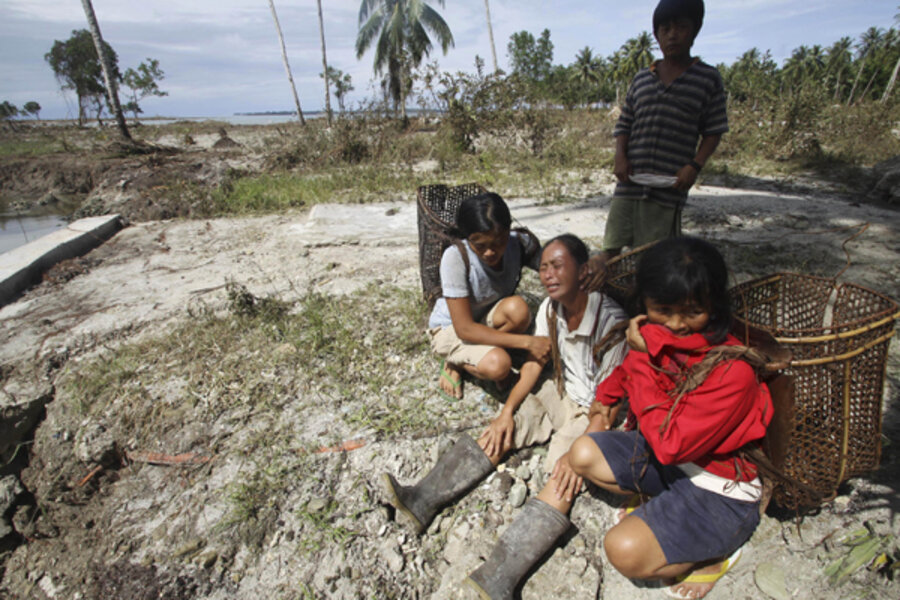Indonesia's tsunami death toll climbs to more than 340
Loading...
Indonesians again have to cope with the hazards of living on a geologically restless archipelago. The death toll from the back-to-back natural disasters that shook Indonesia this week has risen to more than 340 and hundreds more are still missing in the wake of a tsunami and volcano eruption. As aid plans get figured out, discussion is starting to focus on the possibility of a broken tsunami warning system.
Monitor List: World's 5 biggest tsunamis
A 7.7 magnitude earthquake struck the ocean floor near western Sumatra on Monday, triggering a tsunami that swept away entire villages along some remote islands. The quake shares the same fault line as the quake that triggered the massive 2004 tsunami in the Banda Aceh region that killed more than 160,000 Indonesians.
As rescue crews struggled to put a relief plan into action bad weather slowed initial efforts to reach remote locations by air and by sea, including the Mentawai islands, a popular surf destination. However, surfer aid groups were already on the scene dispensing fishing line and equipment to help natives.
On Tuesday, less than 24 hours after the tsunami struck western Indonesia, a volcanic eruption in central Java killed more than 30 and sent thousands of villagers fleeing from their homes. Mount Merapi volcano erupted again Thursday, spewing hot gas and ashes stirring fears of more destruction and complicating aid efforts there.
After the 2004 tsunami, which took the region by surprise because of no warning system, the international community began work on a regional tsunami-alert system for the Indian Ocean similar to the one already operating in the Pacific Ocean. This week's tsunami shouldn't have been a surprise, say experts. The fact that it came as one suggests that the system was not functioning properly, reports the Daily Mail.





